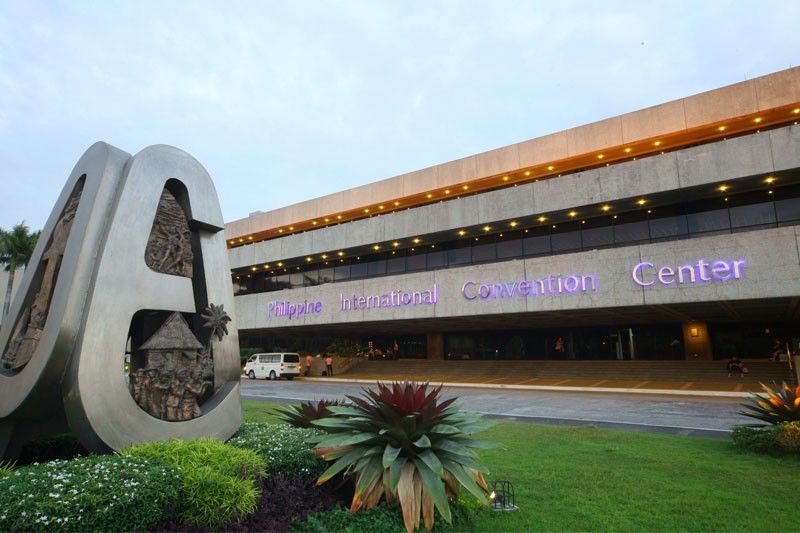Staying ahead of competition

MANILA, Philippines — The property landscape in Metro Manila has seen so much development over the past decades. But as new buildings rise, one iconic structure has stood the test of time, remaining ahead of competition even 42 years after its establishment.
The Philippine International Convention Center (PICC) is one of the country’s monumental structures as it is the first convention center not only in the Philippines but in Asia as well. It formally opened on Sept. 5, 1976 as it played host to the World Bank and International Monetary Fund Annual Meeting.
Despite being decades old, PICC has preserved its same pristine condition it was in when it first opened, thanks to regular upgrades and maintenance it goes through, according to PICC general manager Renato Padilla.
“We’re proud in the sense that we have quality maintenance and operations. And that keeps us ahead in the competition. We are ahead more than some of the new hotels,” Padilla said.
“We don’t stop operation, actually. We continue operating and at the same time do the upgrades, the maintenance,” he added.
Padilla said a considerable amount of money is spent on preventive maintenance in order to ensure the continued quality operations of the PICC’s facilities.
“We cannot afford to stop operating. If you stop operating you will lose some clients,” Padilla said, noting that bookings for the convention center are made ahead of time.
With more than 70,000 square meters of floor area, the PICC’s spaces are versatile enough to be transformed into almost any number of settings or event. It has five building modules, namely the Delegation Building, Secretariat Building, Plenary Hall, Reception Hall and The Forum.
Apart from its well-maintained facilities, another factor that puts PICC ahead in terms of the convention center business is the wide range of meeting rooms it offers, perfect for conventions with smaller breakout sessions.
“Aside from the big plenary and session halls, we have more than 30 function rooms which are for small meetings of 30 people to about 3,500 people,” Padilla said.
The PICC’s delegation building alone houses 12 meeting rooms and two corporate board rooms.
Padilla cited the PICC’s smaller meeting rooms as one of the reasons why clients continue to choose it over newer convention centers in the area.
Meanwhile, the PICC general manager emphasized that at present, its biggest market is the local convention market, particularly those holding two to three- day events.
“Anything international (clients) is bonus. We try to sustain the operations in the local market,” Padilla said.
He added that clients from the international market mostly come from government hosted events like the Asia Pacific Economic Cooperation (APEC) Summit and its related meetings, among others.
Apart from the convention’s market, Padilla said the PICC has also leased out office spaces mainly to government agencies in a bid to generate more revenues.
While the PICC’s performance in the convention business has remained stable over the years, the country’s overall convention industry has taken a downturn since its stellar performance in the 1980s.
Back then, the Philippines was in the top eight countries in the world in terms of convention facilities.
However, other nations overtook the Philippines over the years as they built bigger convention facilities that can cater to larger volume of people.
In 2016, the Philippine meetings, incentives, conventions and exhibition (MICE) market ranked 48th of 116 countries.
Asked if the country can bring back its once superior performance in the global convention business, Padilla said it depends on the Department of Tourism (DOT).
“It depends on the head of the tourism department, if they appreciate the value of conventions,” Padilla said.
“It’s the conventions that rakes money in because delegates from conventions have allowance. While the PICC only gets a portion of that, it’s the entire economy that will be generating the revenue, the hotels, airlines, tour operators, provincial and city tourism destinations. They benefit from the pre- and post convention tours. They move in droves,” Padilla explained.
Earlier this year, the DOT launched the MICE Roadmap 2030, which plants a more definitive approach to the growing industry.
Under the roadmap, the industry is eyeing to grow revenues generated by MICE market to P24.4 billion by 2030, an estimated 430 percent rise from the P4.6 billion registered in 2016.
In addition, the roadmap also targets the gross value added of MICE industry to increase to P1.4 billion by 2030, from P415.3 million in 2013 and an improvement of the average rate in delegate expenditure per meeting by 19 percent.
Despite its already superior performance in the Metro Manila conventions market, Padilla said the PICC still has room to grow in terms of its market share in the conventions industry.
Padilla said at present, PICC accounts for about 50 to 60 percent of conventions market in Metro Manila. He said they are targeting to grow this share to 70 percent in the next five to 10 years.
- Latest

























